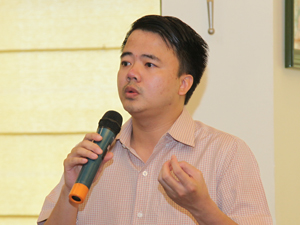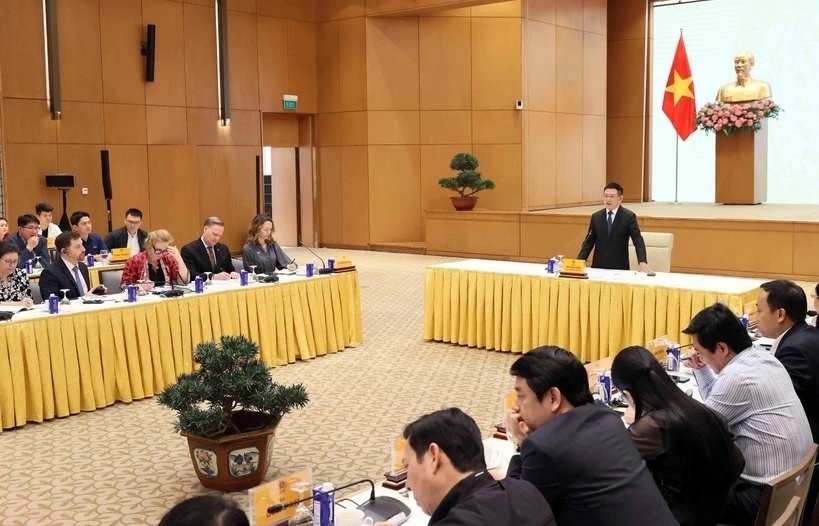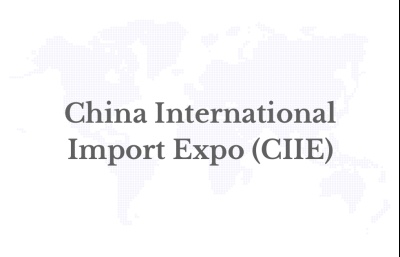Made-in-Vietnam' lean management model for sustainability
 |
| Nguyen Dang Minh talking about his lean management model custom-fit for Vietnam |
As the head of the research team developing this model, where did you take inspiration from?
In 1998, after graduating from Hanoi University of Science and Technology, I studied and worked in Japan for 14 years. At the time, I had the opportunity to work for Toyota, which is considered having the most advanced lean management system in Japan. There I understood the model of the Toyota Production System (TPS) which is the archetype and a shining example of lean manufacturing, and started to study this model to apply it in Vietnam.
Since 1995, Japan has been supporting Vietnam’s research on industrial policies, methodologies, and soft components in various ways, but with limited results despite the fact that Vietnamese people are smart and sensitive towards transferred technology. Thus, I found that we cannot apply business management models mechanically. Each nation or each enterprises has a set of different circumstances and must find management approaches suitable for them. This urged me to look for an individual lean management model for Vietnam based on existing models.
After studying the JPS in collaboration with conducting surveies the implement of lean management model at more than 3,000 domestic enterprises, me and colleagues developed a “Made in Vietnam” lean management philosophy aiming to enhance productivity while promoting sustainable development. I also found that this model can be applied to business, national, and family management in order to create homogeneous development.
How does your lean management model actually work?
In general, lean management is one of the most advanced management models focusing on customer satisfaction and creating values through waste reduction.
“Made in Vietnam” lean management's philosophy revolves around gaining profit or creating added values for the company via utilising the employees’ intellect to continuously improve the business process to minimize costs. In order to increase profit, firms have to keep constant revenue flows or accelerate the company’s income gradually, while at the same time reducing and eliminating waste as much as possible.
The nature of this model has shown that it is not necessary for companies to add more investment for activities of lean management when their systems are designed and established appropriately. Benefits obtained from waste reduction can be used to continuously maintain and develop other lean management activities. Therefore, by exploiting employees’ intellect and motivating them to devote themselves to reducing and minimising waste, lean management will be an effective solution to enhance enterprises’ efficiency and ensure sustainable development.
However, the model is just a solution, the important thing is to make leaders and employees understand and accept the model. Thus, we have built this management model based on the core concept of “Tam The” or “mind-set” in English. This core concept is also the main difference between the “Made in Vietnam” and other lean management models.
Basically, “Tam The” includes two deep understandings and one consciousness. Deep understanding 1 is to comprehend that a person’s work benefits himself. Deep understanding 2 is to comprehend that by doing the work seriously, people will enjoy massive benefits. Consciousness is to understand that people should have a good behaviour, attitude, and morality towards the work. Having this consciousness will help people implement the two deep understandings.
Numerous firms implemented other lean management models with the lack of “Tam the,” and failed to increase productivity. Thus, If firms’ leaders and employees have enough “Tam The” in collaboration with effective manufacturing methods, I am sure their productivity will be enhanced.
What difficulties await enterprises planning to implement your management model?
The major difficulties would be achieving a marked shift in the mind-sets of company leaders and employees, which requires huge commitment and determination.
Notably, almost all firms ask consultancy units to shoulder absolutely all responsibilities in implementing solutions to enhance productivity. Besides, leaders often cannot sustain their “Tam The” of continuous improvement to reap the benefits of applying lean management for a long time. They are impatient and want fast pay-outs in effectiveness. As a result, the productivity may not increase as expected.
Furthermore, it is difficult to change the year or even decade-long set behaviours of leaders and employees. Almost nobody understands the benefits the job brings for them: leaders do not put themselves in their employees’ shoes, and employees just toil away without initiative of their own or understanding that their work benefits them.
Thus, it is clear that the key factors in enhancing productivity under this model are the commitment of leaders, the participation of employees, and highly-professional training programmes with timely rewards and incentives. The role of the leaders within the organisation is a fundamental element of sustaining the progress of lean thinking and engaging employees in the process.
During the past year, we succeeded in co-operating with both foreign and domestic firms to implement the “Made in Vietnam” lean management model, including MK Smart Company, Truong Hai Auto Corporation, Novaland, FECON, Manutronics, VNPT, and Tan Phat Equipment JSC—and productivity soared in each case.
How do you plan to extend your management model?
In order to create a better society, it is necessary to create a connection between the lean management models for families, enterprises, and the nation.
We plan to open faculties training lean management at universities, vocational schools, and colleges, while at the same time increase to popular the “Made in Vietnam” lean management in families and enterprises, especially small- and medium-sized enterprises.
What the stars mean:
★ Poor ★ ★ Promising ★★★ Good ★★★★ Very good ★★★★★ Exceptional
Latest News
More News
- Li Ka Shing, Temasek Back S$12M Cancer Therapy Drive in Singapore (April 05, 2025 | 08:08)
- Vietnam urges US to delay tariff decision (April 04, 2025 | 15:08)
- Malaysians Shop Smarter for Raya 2025, Prioritising Budget & Trust (April 04, 2025 | 13:30)
- NeuralFin adds strategic investors, DLH accelerates AI Agent push (April 04, 2025 | 13:23)
- Tim Hortons Expands in Seoul with New Retail Coffee Line in Grocery Stores (April 04, 2025 | 13:18)
- MyRepublic Debuts Pocket Rocket Adventures, Pioneering Gamified Customer Experience (April 04, 2025 | 13:10)
- How will Vietnam handle Trump’s trade escalation? (April 04, 2025 | 11:54)
- Vietnam should seek dialogue to cope with reciprocal tariff policy (April 04, 2025 | 11:20)
- The impact of Trump’s tariffs on Vietnam (April 04, 2025 | 10:42)
- Intel, TSMC reach preliminary chipmaking deal: report (April 04, 2025 | 09:42)

















 Mobile Version
Mobile Version